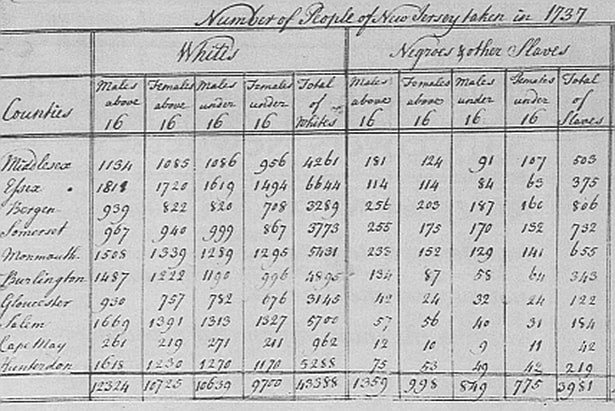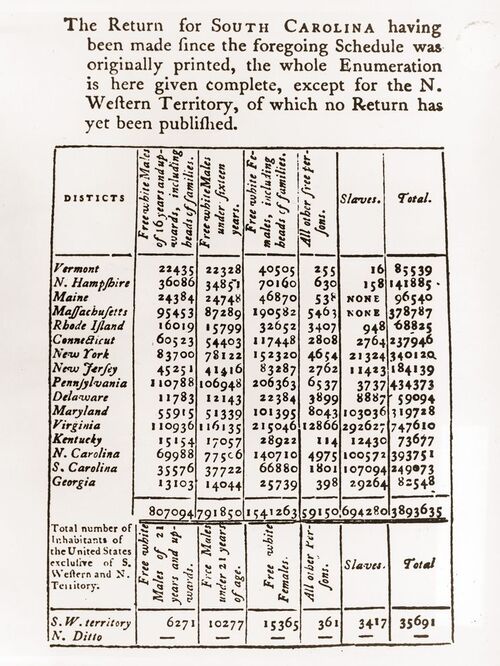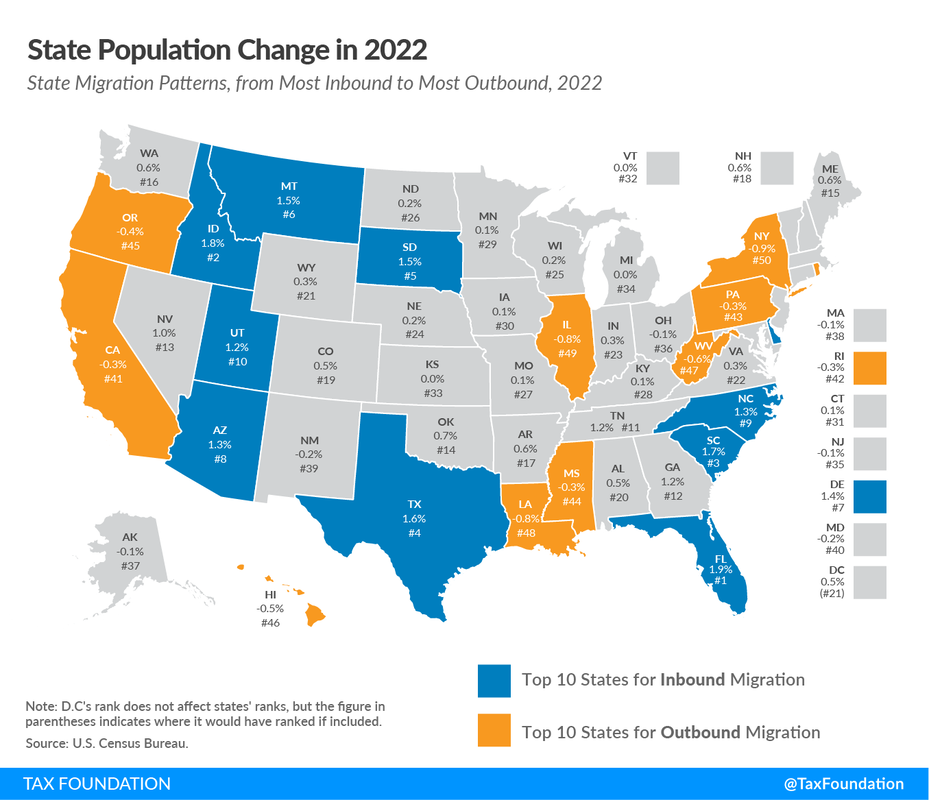-- Population - Overview
|
* Home
* History * Population * Government * Politics * Lobbyists * Taxes * State Symbols * Biographies * Economy * Employers * Real Estate * Education * Recreation * Restaurants * Hotels * Health * Environment * Stadiums/Teams * Theaters * Historic Villages * Historic homes * Battlefields/Military * Lighthouses * Art Museums * History Museums * Wildlife * Climate * Zoos/Aquariums * Beaches * National Parks * State Parks * Amusement Parks * Waterparks * Swimming holes * Arboretums More... * Gallery of images and videos * Fast Facts on key topics * Timeline of dates and events * Anthology of quotes, comments and jokes * Links to other resources |
--Total population The US Census Bureau reported that the population of New Jersey was 9,288,994 people living in the state as of April 1, 2020, an increase of 5.7% from the 8,791,894 in 2010. As the fourth smallest state in land area (behind only Rhode Island, Delaware and Connecticut), New Jersey has the highest population density of all states. Its total land mass equates to 8,721 square miles (22,608 square kilometers) For every square mile of territory, there is an average of 1,195.5 people, which makes it the most densely populated state in the US. New Jersey is the only state to have every single county considered "urban" by the Census Bureau. Growth between 2010 and 2020 was most concentrated in Hudson and Essex counties. Ocean County's rise was driven by Lakewood’s highest-in-the-state population increase of 46%. Newark broke the 300,000-population threshold for the first time in decades, maintaining its spot as the state’s most populous municipality with 281,917, ahead of second highest Jersey City with 262,652. Among all states between 2010 and 2020, Texas had the largest numeric increase in population, gaining 4 million people since 2010. Florida, California, and Georgia all gained at least 1 million in population (increases of 2.7 million, 2.3 million, and 1 million, respectively). Eight additional states (Washington, North Carolina, New York, Arizona, Colorado, Virginia, Tennessee, and Utah) gained at least 500,000 people. Utah was the fastest-growing state over the decade with an 18.4% increase. West Virginia’s decline of 59,000 between 2010 and 2020 was the largest loss of any state. Illinois (down 18,000) and Mississippi (down 6,000) also had population declines for the decade. Puerto Rico’s population declined by 440,000 or 11.8%. New Jersey ranked as the sixth most diverse state in the nation, moving up two places since 2010 in the census diversity ranking. * 2020 Census Statistics Highlight Local Population Changes and Nation’s Racial and Ethnic Diversity, US Census Bureau * NJ grows, and it grows more diverse, NJSpotlight.com, 8/13/2021 * Estimates of Resident Population by Age & Sex, NJ: 1990-1999 * See how and where New Jersey changed, NJSpotlight.com
--Race and Ethnicity A new Census Bureau report released in September 2023 provides a more detailed profile of the diversity of the state's population:
Whites remained the majority of the state’s 9.29 million residents — 52% in 2020 according to the Census Bureau. Most of the growth between the 2010 and 2020 counts, however, was among Hispanics and Asians: The number of people identifying as Latino rose by almost 29%, with the number of Asians growing by 31%. Among those identified as Asians, 369,590 are Asian Indians, 158,076 are Chinese, 115,958 are Filipinos, 13,245 are Japanese, 96,644 are Korean, 22,594 are Vietnamese and 67,998 are other Asian nationals. More than two of every 10 New Jerseyans were Hispanic and one in 10 were Asian. New Jersey ranked as the sixth most diverse state in the nation (seventh if the District of Columbia is included in the rankings), moving up two places since 2010 in its census diversity ranking. * New census data details New Jersey’s growing diversity, NewJerseyMonitor, 9/22/2023 * Detailed Races and Ethnicities in the United States and Puerto Rico: 2020 Census, US Census Bureau --Foreign immigration and national origins
In 2017, The Migration Policy Institute estimated that 2,055,062 New Jersey residents were foreign-born, comprising 22.8% of the state's total population, a 39.2% increase from the number in 2000. Over the more recent decades, New Jersey has depended on foreign immigration to avoid a net decline in population. It is estimated that there were about 475,000 illegal immigrants making up about 5.2% of the population as of 2016, which is the fourth highest percentage of any state. In 2020, 90.3% of the residents in New Jersey were US citizens.
The primary sources of foreign immigration to New Jersey have increasingly been shifting from Europe to Latin America and Asia, but the five largest ethnic groups in 2000 continued to reflect the historical pattern, with the largest groups comprised of Italian (17.9%), Irish (15.9%), African (13.6%), German (12.6%) and Polish (6.9%). Just under 32% of New Jersey residents speak a language other than English at home. The Spanish language, with 14.59% of households speaking it as their primary language at home, is by far the most frequent language spoken other than English, with Chinese (1.23%), Italian (1.06%) and Portuguese (1.06%) the only other languages exceeding one percent. As a percentage of population in 2022, New Jersey was the third highest state in the percentage of Asians with 9.6%, behind only Hawaii (38.6%) and California (14.6%), and the highest of all states in the percentage of Asian Indians with 3.32%. Bergen County is home to all of the nation's top ten municipalities by percentage of Korean population, led by Palisades Park, where Koreans comprise the majority (52%) of the population. The state also had the largest population of Peruvian Americans of all states; the largest population of Cuban Americans outside of Florida; and the third highest Italian American population by percentage, according to the 2000 Census. Some 31.6% of the households in New Jersey reported speaking a non-English language at home as their primary shared language, which is higher than the national average of 21.5%, with the survey measuring only the primary self-reported language spoken by all members of the household. In 2020, the most common non-English language spoken in households in New Jersey was Spanish. 16.4% of the households in New Jersey reported speaking Spanish at home as the primary shared language between all members living in the household. According to data from the National Science Foundation, immigrants comprise 48% of state residents with master’s degrees and 41% of those with doctorates in scientific fields. New Jersey attitudes toward immigrants appear to be more positive than the nation as a whole. A survey in 2014 reported that 61% responded that immigrants strengthened the country because of their hard work and talents compared to 55% nationally; similarly, 29% of New Jerseyans responded that immigrants burdened the country because they took jobs, housing and healthcare compared to 36% who so responded for the US as a nation. New Jersey had the same percentage as the US with 60% of respondents who believed that the best option for dealing with illegal immigrants was to provide a way for them to become citizens; 15% of New Jerseyans responded that illegals should be identified and deported compared to 19% in all states. * State Immigration Data Profiles, New Jersey, Migration Policy Institute * Estimates of the Unauthorized Immigrant Population Residing in the United States: January 2015–January 2018, US Department of Homeland Security * New Jersey Data Profile, DataUSA.io * US unauthorized immigrant population estimates by state 2016, Pew Center
|



